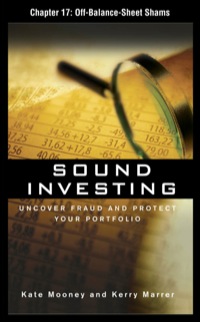Question
1. Pedro presented a bill to Jose, the drawee. Jose destroyed the bill. What can Pedro do? A. Pedro may sue Jose for the destruction
1. Pedro presented a bill to Jose, the drawee. Jose destroyed the bill. What can Pedro do? A. Pedro may sue Jose for the destruction of his property B. Pedro may go after the drawee for the bill C. Pedro may no longer collect since the bill was destroyed D. Pedro may consider the bill as impliedly accepted by Jose 2. Presentment for acceptance of a bill of exchange is not necessary A. Where the bill is payable after sight B. Where the bill is drawn payable elsewhere than at the residence or place of business of the drawee C. Where it is payable at a certain number of days after date D. None of the choices 3. Aaron makes a promissory note payable to Barney or order. Barney indorsed the note to Caleb, then Caleb to Dale, Dale to Earl and Earl to Fabian, the holder in whose hands the note is dishonored. Fabian notifies Barney, Caleb, Dale and Earl about the dishonor of the note and subsequently indorses it to Gabriel. Which is not correct? A. The notice to Caleb inures to the benefits of Dale, Earl and Gabriel. B. The notice given by Fabian to Barney inures to the benefits of Caleb, Dale, Earl and Gabriel. C. The notice to Earl inures to the benefit of Dale. D. The notice to Dale inures to the benefit of Earl and Gabriel. 4. The holder is required to give notice of dishonor to the drawer to make him liable on the instrument in one of the following cases: A. Where the drawer is the person to whom the instrument is presented for payment B. Where the drawer and the drawee are the same person C. Where the drawer has countermanded payment D. Where the instrument was made or accepted for his accommodation 5. Which of the following does not discharge a negotiable instrument A. Payment by maker of a promissory note before maturity date B. Intentional cancellation of the instrument by the holder C. Payment by party primarily liable to holder or his authorized representative D. Voluntary surrender of the instrument by the holder to the maker without collecting 6. Which of the following does not discharge a negotiable instrument? A. Payment in due course by the accommodated party which the instrument is made or accepted for his accommodation B. Payment in due course by the principal debtor C. Intentional cancellation of the instrument by the maker D. Payment in due course by the accommodation maker 7. When is a negotiable instrument not discharged? A. When the holder thereof intentionally cancels the instrument B. When the principal debtor becomes the holder of the instrument before, at or after maturity in his own right C. When it is paid in due course by the principal debtor D. When it is paid in due course by the party accommodated where the instrument is made or accepted for accommodation 8. In the renunciation of the holder of his rights against any party to the instrument, which of the following statements is false? A. If the instrument is delivered to the person primarily liable without collecting, it constitutes oral renunciation. B. If renunciation is made in favor of any party secondarily liable, all parties subsequent to him are discharged from liability. C. Renunciation will not affect the rights of a holder in due course without notice D. If the renunciation is made in favor of the party primarily liable, it must be made before, at or after maturity date 9. Myron makes a promissory note for P2,000 payable to the order of Prince. Prince negotiates the note to Avery who, with the consent of Prince, raises the amount to P20,000 and thereafter indorses it to Byron, Byron to Cyrus, and Cyrus to Dylan who is not a holder in due course. In this case: A. Dylan can recover P2,000 as against Myron B. Prince and Avery are liable to Dylan for P20,000 C. Byron and Cyrus are not liable to Dylan D. None of the choices 10. Mac makes a promissory note for P3,000 payable to the order of Pat. Pat negotiated the note to Abe who with the consent of Pat raises the amount to P30,000 and thereafter indorses it to Ben, Ben to Chi and Chi to Dan, who is a holder in due course. In this case A. Dan can recover P30,000 as against Mac B. Dan can recover P3,000 from Mac C. Pat and Abe are liable to Dan for P3,000 D. Ben and Chi are not liable to Dan
Step by Step Solution
There are 3 Steps involved in it
Step: 1

Get Instant Access to Expert-Tailored Solutions
See step-by-step solutions with expert insights and AI powered tools for academic success
Step: 2

Step: 3

Ace Your Homework with AI
Get the answers you need in no time with our AI-driven, step-by-step assistance
Get Started


